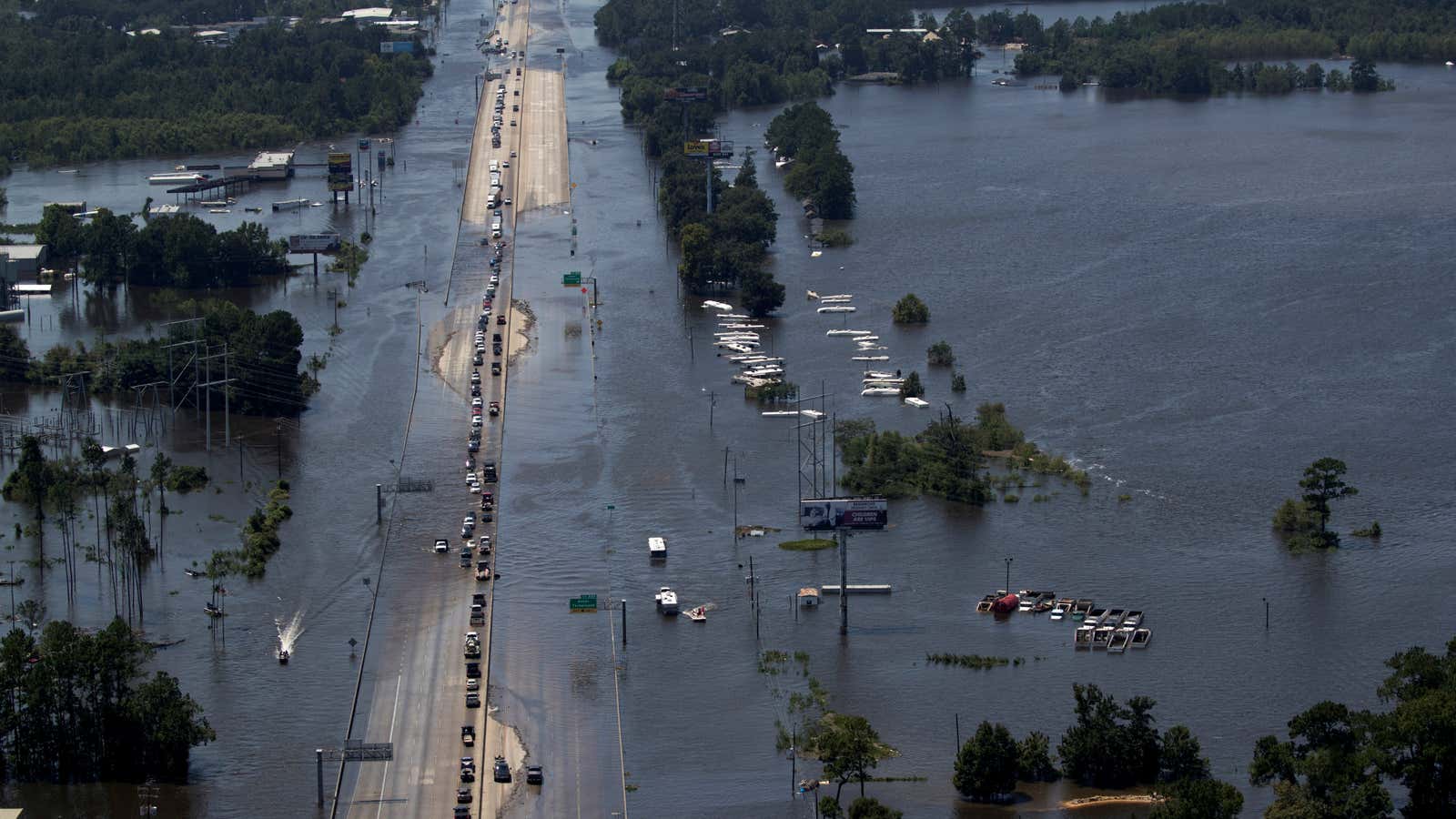The level of carbon dioxide trapped in the atmosphere and contributing to climate change, along with methane and nitrous oxide, hit a new record in 2017, the UN’s World Meteorological Organization said in a new report.
These three greenhouse gases, the main causes of climate change, are all increasing and there is no sign of the trend reversing, the WMO said. As a result, more sea level rises, ocean acidification, and extreme weather can be expected.
“The last time the Earth experienced a comparable concentration of CO2 was 3-5 million years ago, when the temperature was 2-3 ºC warmer and sea level was 10-20 meters higher than now,” said Petteri Taalas, secretary-general of the WMO.
The amount of CO2 in the atmosphere rose to a record of 405.5 parts per million last year, up from 403.3ppm the previous year, and 400ppm in 2015, the report published today said. Between 2015 and 2016, the amount of CO2 spiked higher because El Niño caused droughts in tropical regions and reduced the capacity of “sinks” like forests and vegetation to absorb carbon dioxide. Last year, the increase returned to the average growth rate of the last decade.
Levels of methane are 2.5 times higher than before the Industrial Revolution, while levels of nitrous oxide, which warms the planet and destroys the ozone layer, were more than 20% above pre-industrial levels. There has also been a resurgence in CFC-11, a potent greenhouse gas that depletes the ozone, even though it’s regulated under an international agreement.
Total radiative forcing—the warming effect on the climate—by greenhouse gases has increased by 41% since 1990, the WMO said.
“Without rapid cuts in CO2 and other greenhouse gases, climate change will have increasingly destructive and irreversible impacts on life on Earth,” said Taalas. “The window of opportunity for action is almost closed.”
The WMO adds its voice to other stark warnings received this year. The UN Intergovernmental Panel on Climate Change said last month that the world needs to transform in an unprecedented way if global temperature rises were to be kept with 1.5 ºC of pre-industrial levels, a severe but less catastrophic change to the planet than 2 ºC. The 1.5ºC level could be reached as soon as 2040, the scientists warned.
As carbon dioxide remains in the atmosphere for hundreds of years, and in oceans for even longer, cutting carbon emissions and removing greenhouse gas from the atmosphere is critical. WMO deputy secretary-general Elena Manaenkova says there is “no magic wand” to remove the excess carbon dioxide from the atmosphere. But many companies are working to improve carbon capture and storage technology.
World leaders will meet in Poland next month for COP24, a major conference on climate change where the goal is to adopt the implementation guidelines of the Paris climate accord. Donald Trump pulled the US out of the agreement but cities and states have said they will honor their commitments to it anyway. Just yesterday, the US president once again questioned the existence of climate change.
